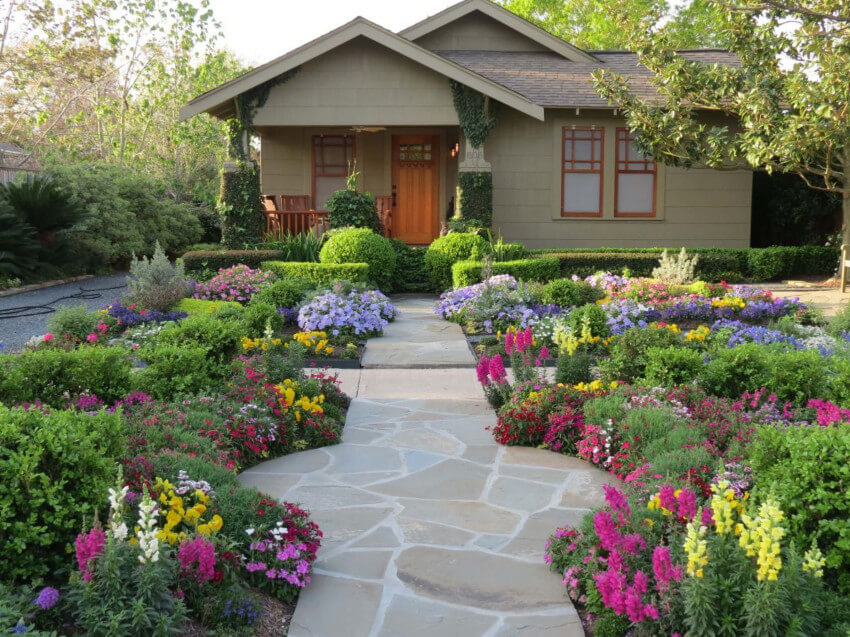The first thing you need to know about xeriscaping is that it’s a type of landscaping which has the main goal of conserving water. It’s especially great for locations where the sun is too strong and there’s little water, or really just if you’re going ecological and want to save as much as you can.
What’s even better about xeriscaping,
Not only does it save water, but it also creates a low-maintenance yard! Of course, you’ll need to cover some basic tasks, like:
- Prune shrubs and trees
- Deadhead flowers
- Pull weeds
- Rake debris
- Maintain a compost pile
But still, the maintenance is a lot easier to deal with than most types of landscaping available. Want to know more about xeriscaping? Keep reading!
“All gardening is landscape painting.” - William Kent
Water Conservation

As I mentioned before, the main goal of xeriscaping is to conserve water, so when you’re planning your xeriscape design, you need to remember that.
But also, take into account:
- Budget
- Function
- Aesthetics
- Maintenance
For example:
If you want a beautiful, big green lawn, that might not be the best pick for xeriscaping since big lawns require huge amounts of water.
However,
That doesn’t necessarily mean to forget about the lawn, just dial it down and choose a drought-tolerant grass for your area.
Water Efficiently

Xeriscape designs require little watering. You can already avoid sprinklers, those end up being a huge waste of water, and opt for a drip irrigation system.
More than that,
Remember to water in the morning, and water plants deeply and infrequently.
Why is that, you ask?
When watering plants like that, they develop healthier, drought-tolerant roots. If you water just the surface, also called shallow watering, their roots will be thirsty and your plants will suffer.
Soil Quality

It’s important to have a good quality soil that retains moisture to sustain your plants’ lives. Even though you’re picking drought-tolerant plants, they still need a well-drained, moisturized soil in order to survive. To achieve that, add several inches of organic material!
Talking about soil quality, I must add:
Mulch Properly

Properly mulching can do wonders to your landscape, 2 to 3 inches of natural mulch will help:
- Prevent evaporation
- Keep roots cool and moist
- Prevent weeds
Even more than that, it creates a gorgeous, natural aesthetics while returning nutrients to the soil.
Local Plants

I’ve brought here some examples of plants that are perfect for your xeriscape design,
However,
If you’re trying xeriscape landscaping, it’s important to take your time and learn which are the best native plants to complete the xeriscaping purpose.
That’s because:
Native plants are more tolerant of local weather conditions, they bear up against local pests and diseases, and they attract insects that can also bring benefits to your plants.
Succulents
- Hens and chicks
- Aloe vera
- Stonecrop
Ornamental grasses
- Purple fountain
- Yellow pampas
- Mexican feather
- Blue oat
Evergreen Trees
- Acacia
- Peppermint
- Cypress
- Eucalyptus
- Olive
- Pine
Deciduous Trees
- Bottletree
- Desert willow
- Pomegranate
- Oak
Western native shrubs
- California lilac
- Brittlebrush
- Christmas berry
- Purple sage
- Oregon grape
Flowering shrubs
- Blue hibiscus
- Rose of Sharon
- Lavender
- Cape honeysuckle
- RockRose
GET A FREE QUOTE for your xeriscape landscaping design!
